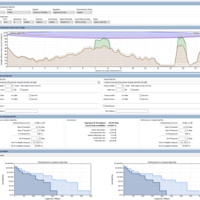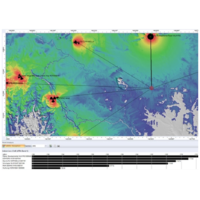Guide to Understanding MIMO
First up, MIMO is short for Multiple Input - Multiple Output
So you've just bought a new wireless broadband modem and it has two ports to plug in your antenna, and you're probably wondering which one to use, and why you need two?
Rest easy - without getting too technical, here is some basic information about MIMO technology.
Before we get to that though, if you're not sure how your mobile phone or wireless internet USB stick works, you will benefit from reading our Guide to 4G.
See you back here when you're done.
In the beginning...
Since the beginnings of radio technology, we've become accustom to a mobile phone or UHF radio transmitting with a single antenna. This transmission travels through the air and is received by a much larger antenna on a phone tower, which in turn rebroadcasts the signal to your intended destination.
This technology is simple and effective for transmitting a phone call.
However, with the increasing demand for faster and more reliable 4G wireless internet (which works in the same way as a voice call), more complex methods of transmitting are needed.
If you've been using 3G internet for a few years, you've probably noticed the claimed top speeds rapidly increasing. Starting around 3.6Mbps for the first series of mobile broadband 'sticks', to 7.2Mbps around 2007, to 21Mbps in 2008, to 42Mbps shortly after, and now 100Mbps with the 4G introduction in late 2011. With 5G knocking on our door, there are some who estimate the new generation may increase speeds up to 50 times from 4G.
Of course it's unlikely that you've actually experienced (or will experience) such blisteringly fast bit rates (that's a story for another time), but most people will have experienced a noticeable jump in speed when changing to a new modem.
Jumps in speed
Increasing speed is a tricky business - in theory, the biggest factor limiting speed is bandwidth.
Each phone tower is given a total width of frequencies it can transmit on, and each person that connects is allocated a small channel of a certain width.
This means that each tower has a limited number of customers it can service before it becomes congested.
So the most obvious way to increase speed is to give each customer a wider range of frequencies to transmit on - this means there will be less people per phone tower, which means more phone towers are required to service the need, which is expensive!
Instead, the first step in increasing speed is to exploit the other factors aside from bandwidth.
3G technologies like HSPA take advantage of digital modulation techniques, like Quadrature Phase Shift Keying (and many other tricks) to increase the symbol rate, which is the second major factor that limits speed.
Speed is also limited by signal-to-noise ratio (SNR), to which we can increase the power (or loudness) of the transmission so the phone tower can 'hear' us better, but this results in quickly diminishing returns. Once we've squeezed all the performance we can from antenna-to-antenna transmission, we have to approach the problem differently.
This is where MIMO comes in to play - if we're unable to improve air transmission, why not increase the number of antennas?
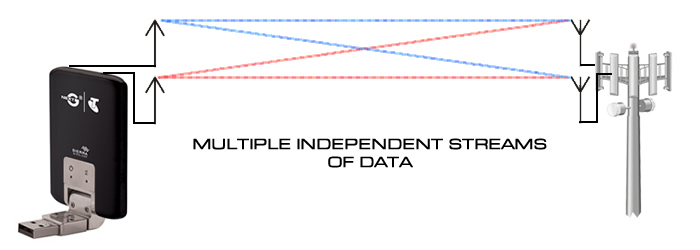
Bringing more antennas to the party!
By using multiple antennas we can forget about the difficulties in transmitting over air and instead place the burden on the signal processing hardware in your modem.
Because all the antennas transmit at the same frequencies, no extra per-user bandwidth is required from the phone tower.
Spatial Multiplexing is a set of clever modulation techniques that allow us to transmit independent streams from multiple antennas on the same frequencies without garbling the information we send.
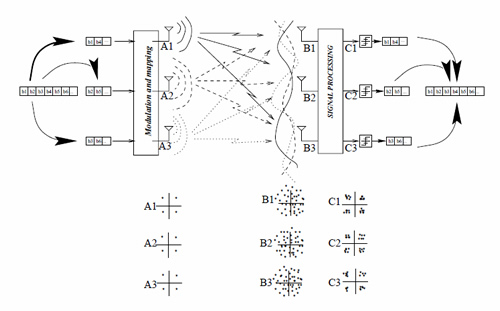
[2] This diagram demonstrates how we can shift the performance burden onto the signal processing hardware, which splits the data stream at the link layer into frames that are then encoded, modulated and mapped to the outgoing antenna.
The receiving antenna performs the above tasks in the reverse order, recombining the (hopefully error free) frames into the original data stream.
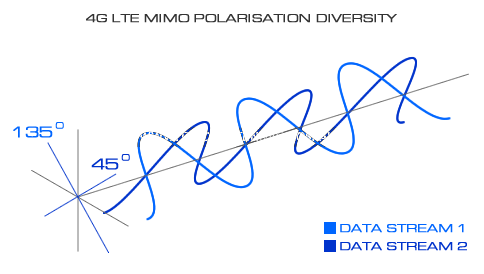
Normal 3G and Next-G signals are broadcast vertically polarised, where the wave travels "up and down".
LTE MIMO waves are slant polarised where each wave is rotated 45 degrees from the horizontal, mirrored, so the first is at 45 degrees and the other at 135 degrees. This smart little trick is called polarisation diversity and allows your modem to distinguish two independent streams of data over the same frequency allocated by the cell tower.
Because our modem has two internal antennas each responsible for receiving one stream of data, it is absolutely crucial we have two separate external antennas.
We cannot use a 'Y' patch lead or some other trick to connect both ports of the modem into one antenna, nor can we connect both external antennas into one port.
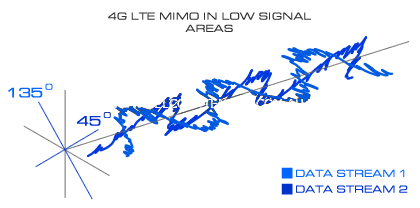
Using MIMO
It is important to know that MIMO is switched on and off by the modem.
The decision whether to use MIMO is negotiated with the cell tower, whereby the quality of the received and transmitted signals are assessed (a metric known as CQI).
When signal strength or quality is low, it's difficult for the modem to distinguish between the two data streams, so when signal levels drop below a certain threshold level, MIMO is switched off and the modem operates with only one antenna (Port 1 on Sierra Wireless modems).
MIMO antennas
To work out whether the towers in your area support MIMO, check the Telstra Mobile Broadband Coverage Map.
The darkest blue colour indicates 4G 100Mbps rated areas, which uses 2x2 MIMO to deliver its speed.
The lighter blue area indicates 3G 42Mbps DC HSPA+ areas, which doesn't use MIMO, but uses two channels on the one antenna to deliver faster speeds.
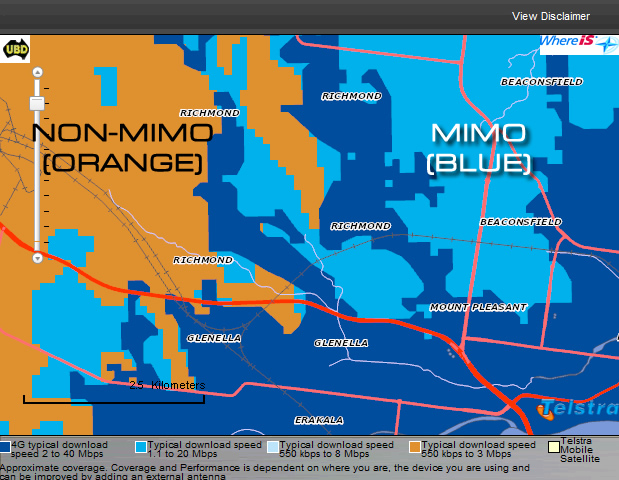
Polarisation diversity
To take full advantage of MIMO, (currently used in 4G LTE communications), two antennas must be used.
When installing directional antennas like a Yagi antenna, the first antenna must be rotated horizontally to a 45 degree angle and the second to a 135 degree angle. This is because of "polarisation diversity".
LTE uses polarisation diversity to help distinguish between the two data streams sent from the tower.
When outside a MIMO area, most modems can still benefit from the use of dual antennas.
3G services can use advanced receiver diversity techniques which utilise a second antenna to capture delayed signals and higher quality radio transmissions, and the two streams combined via MRC.
Performance improvement is most commonly observed in spatial-dispersive multipath environments where signals are scattered across a physical distance.
DC-HSPA+ services can benefit when carriers are broadcast on separate polarities, allowing antennas to be better matched to the polarity of the target carrier.
More advanced receiver types can use linear equalisation and decision feedback equalisation techniques in an attempt to minimise inter-symbol interference.
Having two antennas permits a somewhat 'stereoscopic' view of interferers, allowing some advanced receivers to adjust combining coefficients to set a null in the direction of an interferer.
Looking for a powerful MIMO modem router?
Our Telco X1 Pro is perfect for getting high speed internet where the NBN does not reach.
 |
A heads up!
When using only one antenna, ensure it's connected to Port 1 of the modem, which is often labelled on the plastic/rubber tag covering the port.
Helpful resources
[1] D. Halperin, W. Hu, A. Sheth, and D. Wetherall, 802.11 with Multiple Antennas for Dummies, University of Washington and Intel Labs Seattle. [2] D. Gesbert, and J. Ahktar, Breaking the barriers of Shannon's capacity: An overview of MIMO wireless systems, Telenor's Journal: Telektronikk. [3] Professor Robert W. Heath Jr. - Single user MIMO communication

